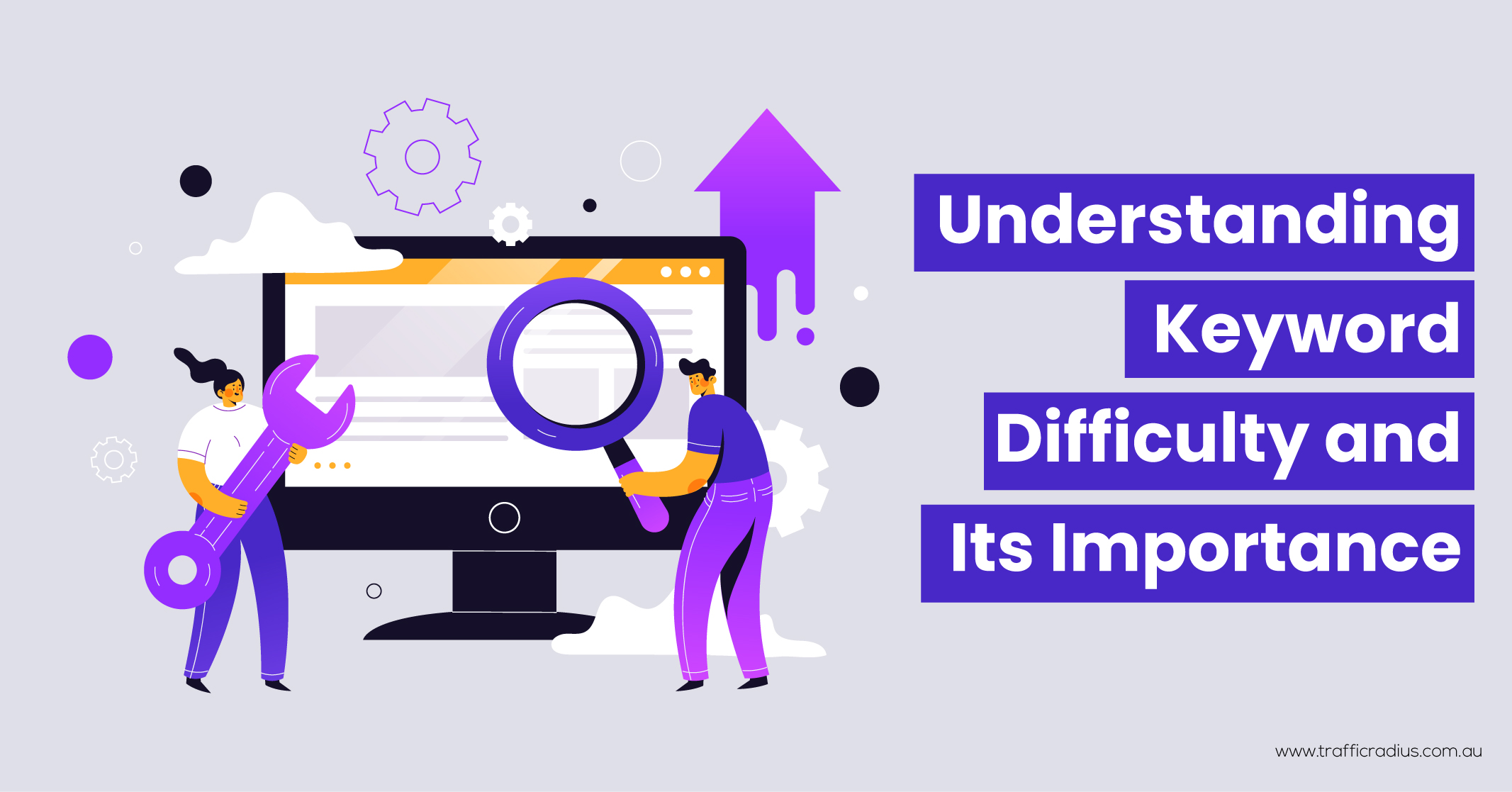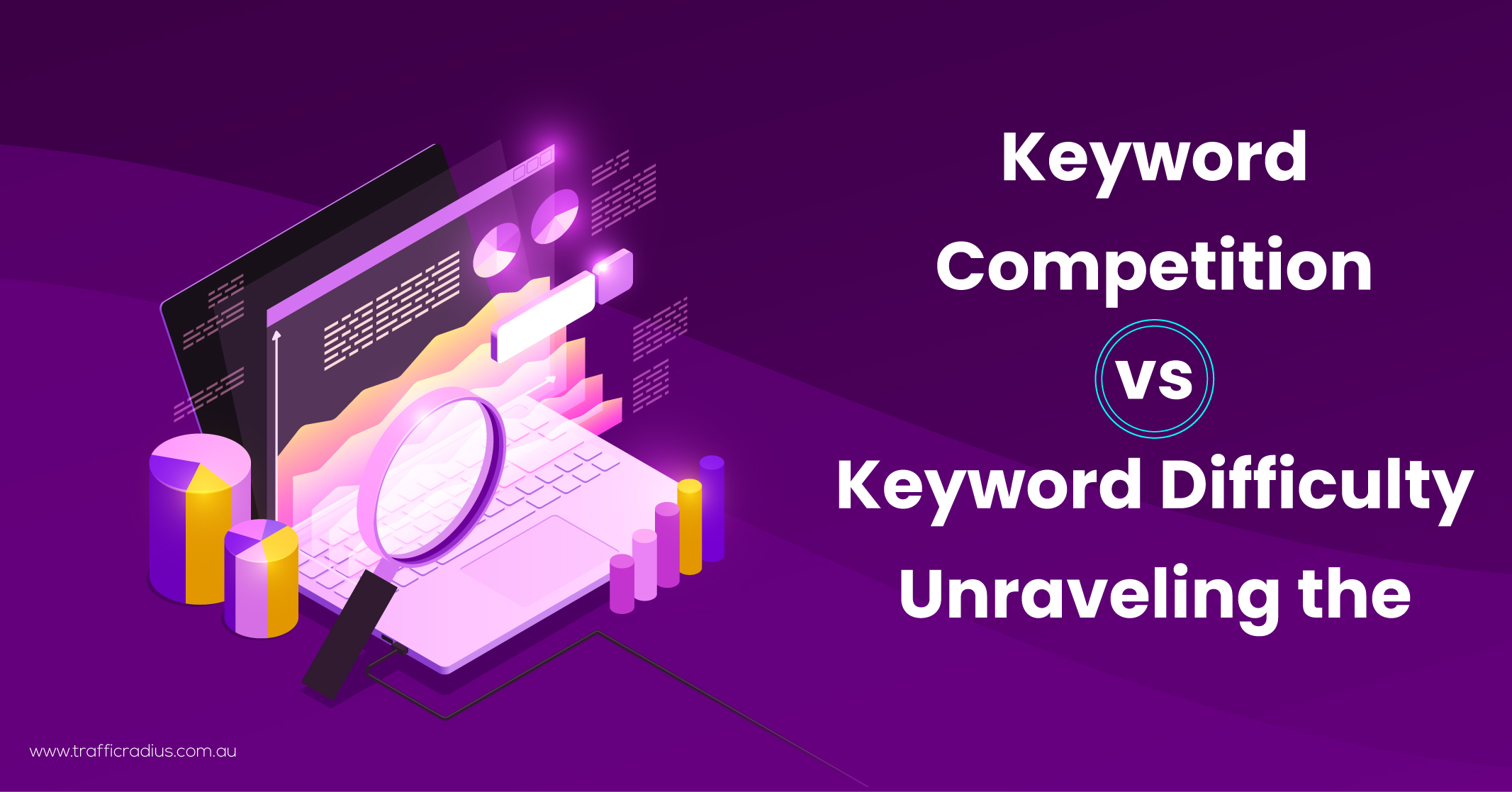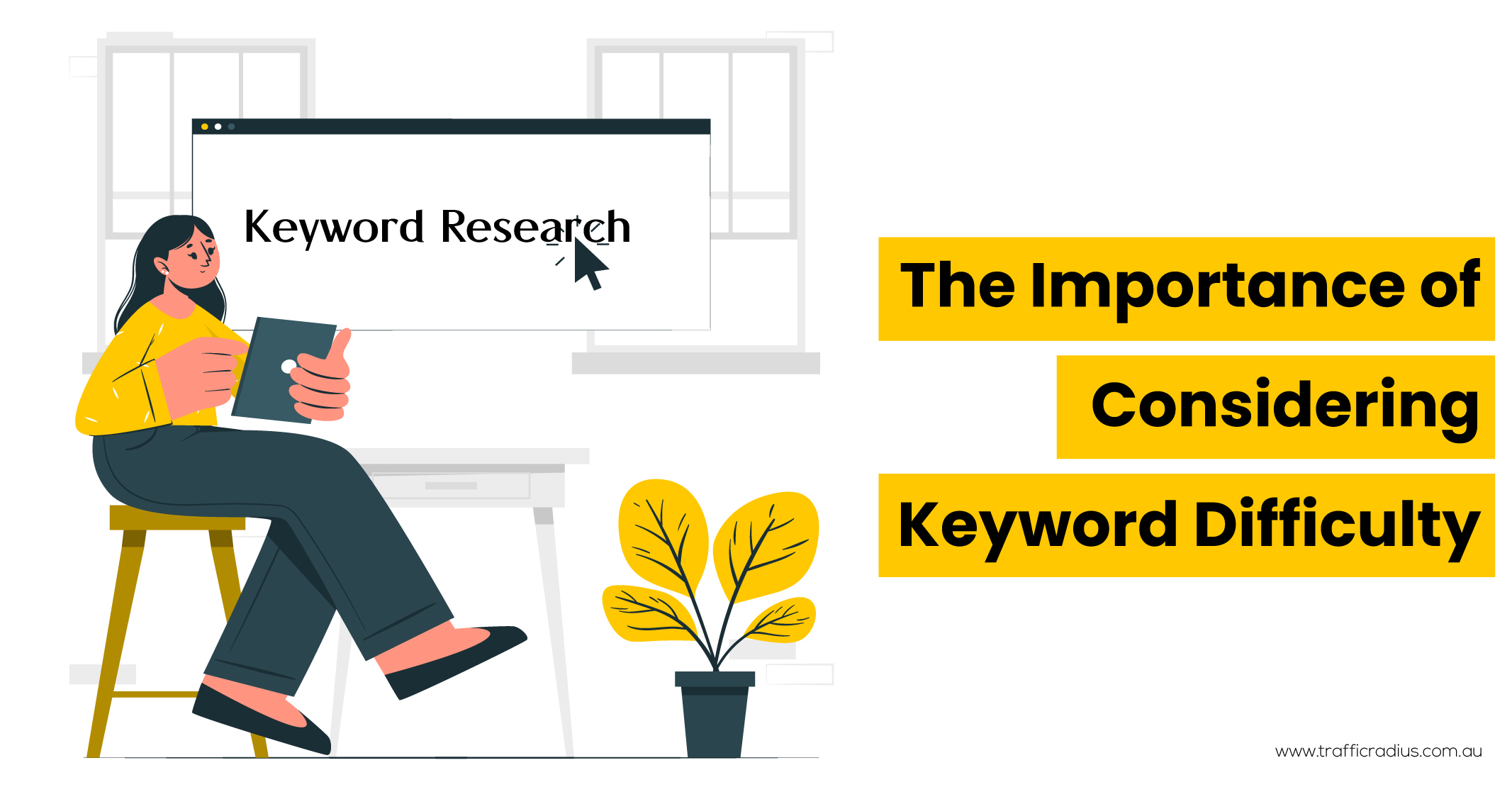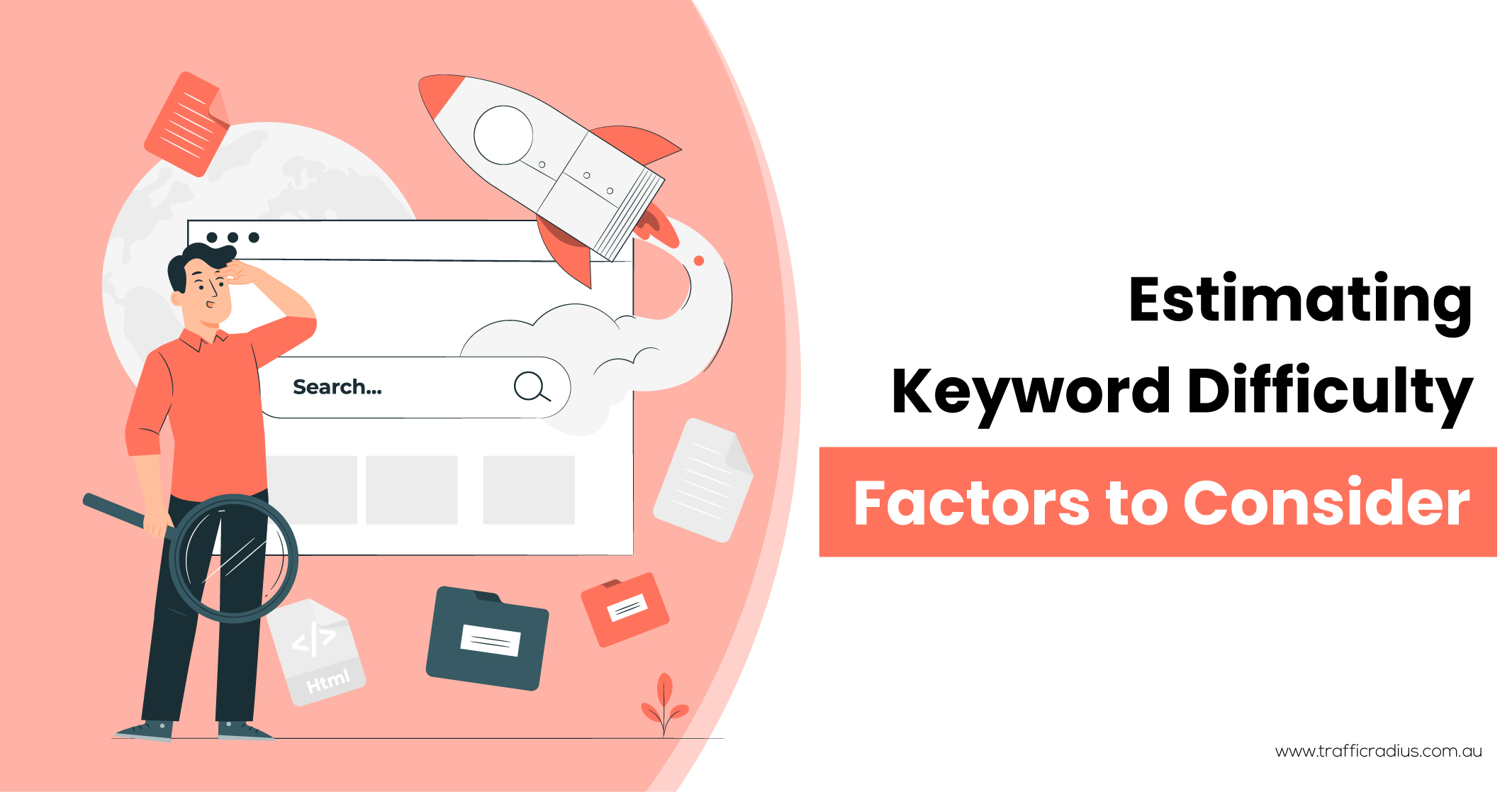I hope you enjoy reading this blog post.
If you want to get more traffic, Contact Us

Click Here - Free 30-Minute Strategy Session
Be quick! FREE spots are almost gone for this Month. Free Quote

Just like bakers discuss flour, SEO experts frequently mention keyword difficulty. However, not every digital marketer may fully comprehend its meaning, or they might hesitate to ask for clarification.
Understanding keyword difficulty goes beyond surface-level knowledge and requires familiarity with Google’s ranking factors. Even if you grasp the concept, there are still crucial aspects to consider for making informed SEO decisions.

Click Here – Free 30-Minute Strategy Session
Be quick! FREE spots are almost gone for this Month
In this blog, we will provide you with a comprehensive understanding of keyword difficulty. We will explore what the keyword difficulty score signifies and how to leverage it effectively. Additionally, you’ll gain practical tips and expert guidance on evaluating keyword difficulty and integrating it into your digital marketing strategy. Let’s dive right in!
Keyword difficulty, also known as keyword ranking difficulty or SEO difficulty, is a metric that assesses the level of effort required to achieve a high ranking on Google’s search engine results page (SERP) for a specific keyword. It provides insights into the competitiveness of a keyword and helps you refine your keyword strategies while effectively allocating your time and resources.
Various SEO and keyword tools utilise different methodologies to determine and represent keyword difficulty, often displayed as a percentage or numeric value. However, the common factor among these tools is the consideration of the quantity and quality of backlinks to the top-ranking websites for the keyword.
Keyword Strategy Ideas:

When discussing keywords, you might often encounter references to both keyword competition and keyword difficulty. However, it’s essential to understand the slight but significant difference between the two metrics.
Google assigns a difficulty score ranging from 1 to 100 to assess keyword difficulty specifically for organic search. On the other hand, Google also provides a keyword competition metric, which pertains to the level of competition in paid search campaigns.
To navigate through your keyword research ideas effectively, here are the key points to remember:
To gain a deeper understanding of how keyword difficulty is calculated and how you can leverage it to your advantage, let’s delve further into its significance and implications.
When discussing keywords, you might often encounter references to both keyword competition and keyword difficulty. However, it’s essential to understand the slight but significant difference between the two metrics.
Google assigns a difficulty score ranging from 1 to 100 to assess keyword difficulty specifically for organic search. On the other hand, Google also provides a keyword competition metric, which pertains to the level of competition in paid search campaigns.
Here are some key keyword research tips to remember:
To gain a deeper understanding of how keyword difficulty is calculated and how you can leverage it to your advantage, let’s delve further into its significance and implications

When aiming for top rankings on search engines, it’s crucial to understand the capabilities of your competitors, market trends and the interests of your target audience. This is where keyword research comes into play.
Keyword difficulty is a metric that considers both competition and audience preferences to gauge the level of difficulty in achieving a desired ranking. It helps you assess your chances and determine the amount of effort required to reach your desired position on the search engine results page (SERP).
What To Know?
In summary, understanding keyword difficulty is essential for an effective SEO strategy. It allows you to make informed decisions about which keywords to target, set realistic expectations and allocate resources wisely. Now, let’s delve into the exciting details.

To estimate keyword difficulty, various tools are available, each offering a unique approach, although they all rely on Google’s ranking factors. The primary factors considered by these tools are content relevance and backlinks.
When examining a keyword like “hot air balloons,” the algorithm of these tools would analyse the top-ranking pages for that keyword and assess the number of backlinks on those pages. However, backlinks are not the sole criterion used in the calculation.
How Is Keyword Difficulty Calculated?
By considering these factors, you can better estimate the difficulty of ranking for a specific keyword and adjust your SEO strategy accordingly.
To check the difficulty of a keyword, you can rely on several SEO tools that provide keyword difficulty (KD) scores. These scores are typically presented as numeric values or percentages, and the range is often divided into different groups based on the tool’s segmentation.
However, it’s worth noting that KD scores can vary across different tools, even for the same keyword. Backlinko highlights this discrepancy, as different tools may analyse different data sources and apply their unique methodologies. The accuracy of the KD measure relies on the quality and completeness of the data it utilises.
At Traffic Radius, we prioritise data accuracy by collecting information from multiple reliable sources. Our KD score is presented as a numeric value ranging from 1 to 100. Here’s how the scores are categorised:
You can access the KD metric in various keyword research tools on the Traffic Radius platform, including the free keyword generator, keyword generator, keyword gap, keyword overview and the SEO competitive analysis section under search. For more advanced insights and practical keyword strategy tips on utilising keyword difficulty, you can refer to our additional resources.
When it comes to keyword difficulty, there is no universally defined “good” level. Instead, it’s important to understand what the score signifies and how it impacts your SEO and marketing strategies.
Rather than limiting your keyword targeting to a specific difficulty level, it’s best to adopt a diversified approach. A mix of keywords with varying difficulty ranges can yield better results.
Keyword Strategy Tips:
Remember, a well-rounded approach that considers different keyword search difficulty levels and aligns with your overall goals and resources is key to achieving optimal results in keyword targeting.
In summary, keyword search difficulty is a crucial metric in SEO that helps digital marketers gauge the level of competition they may encounter when trying to rank for specific keywords. It considers factors like backlinks, domain authority, content quality and search intent to provide valuable insights into the effort and resources required to achieve desired search engine rankings.
There is no universally defined threshold for a “good” keyword search difficulty score. It is advisable to adopt a diversified keyword targeting strategy that encompasses a mix of low, medium and high-difficulty keywords.
Important Points to Know:

LEAVE A REPLY